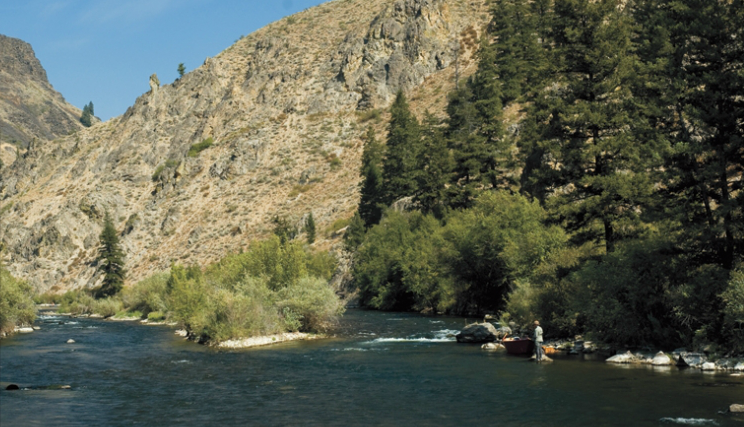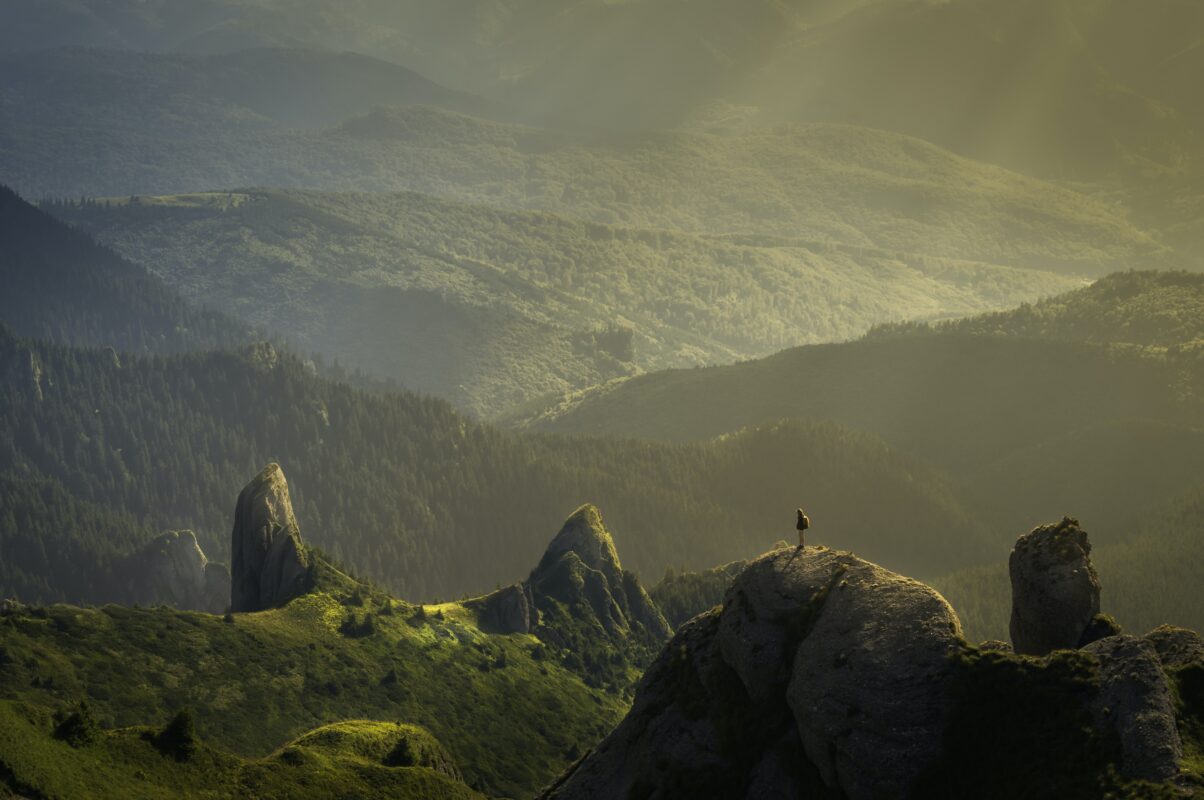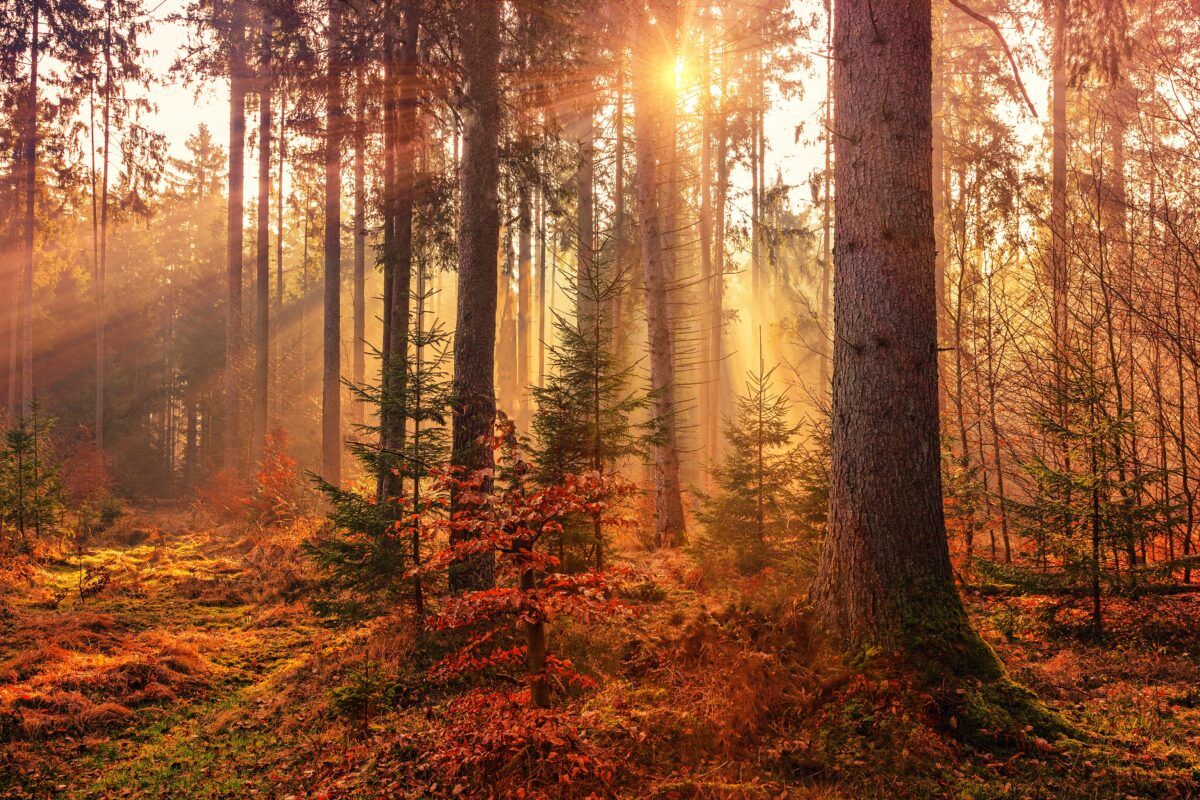Are you a passionate fly fisherman looking for a new and exciting destination? Look no further than the South Fork Boise River in southern Idaho. This hidden gem is a haven for fly anglers, boasting an abundance of heavily spotted and brightly colored rainbow trout. With its remote arid canyon setting and diverse wildlife, the South Fork provides an immersive and tranquil experience. What sets this river apart is the increase in the population of large wild rainbows in recent years, making it a prime location for your next fishing adventure. Whether you prefer wade fishing or floating, the South Fork offers both options and has a winter catch-and-release season from December to March. From the best hatches of stoneflies, caddis, and Pale Morning Duns in late spring and summer, to midge hatches and winter fishing with leech patterns, this river has something for every angler. Just remember to plan your trip wisely, as the South Fork is closed in April and the first three weeks of May. So pack your gear and get ready to reel in some unforgettable memories on the South Fork Boise River.
South Fork Boise River Overview
The South Fork Boise River in southern Idaho is a fly fishing destination that attracts anglers from all over. Known for its abundant rainbow trout and diverse hatches, this river offers a unique and rewarding fishing experience. Nestled within a remote arid canyon, the South Fork is not only a haven for anglers but also for various wildlife species.
One of the main attractions of the South Fork Boise River is the increase in the population of large wild rainbows in recent years. These fish are highly sought after by fly anglers for their size, strength, and stunning colors. Catching one of these majestic creatures is a thrill unlike any other.
For those looking for a fishing experience during the winter months, the South Fork offers a catch-and-release season from December to March. While the river may be cold, anglers can still enjoy the beauty and tranquility of the river while targeting rainbow trout with their favorite flies.
It is important to note that the South Fork is a “governor’s river” and does not allow commercial guiding. This means that anglers are responsible for exploring the river on their own, adding an element of adventure and self-reliance to their fishing trip.
Whether you prefer wade fishing or floating, the South Fork has something for everyone. The river provides ample opportunities for wading, with various access points along its course. Anglers can choose the best spots to fish from the riverbank, carefully wading through the water while casting their lines.
Best Times to Fish
To maximize your chances of a successful fishing trip on the South Fork, it’s essential to plan your visit during the best times for hatches. Late spring and summer are particularly fruitful periods, with an abundance of stoneflies, caddis, Pale Morning Duns, Pink Alberts, and Baetis hatches. During these hatches, trout become more active and eagerly feed on the surface, making for exciting and productive fishing.
In addition to the late spring and summer hatches, midge hatches are prevalent in the winter months. Fishing during the winter can be challenging but rewarding, especially when using leech patterns to entice trout. To make the most of your winter fishing, it’s crucial to be properly prepared with appropriate gear and clothing to withstand the cold temperatures.
It’s worth noting that the South Fork is closed in April and the first three weeks of May, as this is the spawning period for rainbow trout. This closure helps protect the fish population and ensures their continued health and vitality.
Fishing Regulations
When enjoying the South Fork Boise River, it’s essential to adhere to the fishing regulations in place. This helps conserve the fish population and maintain a sustainable fishery for future generations of anglers. During the catch-and-release season, which runs from December to March, all fish caught must be carefully released back into the river unharmed. This practice minimizes stress on the fish and allows them to thrive.
It’s important for anglers to familiarize themselves with the specific regulations governing the South Fork, including any size limits or restrictions on certain types of tackle or bait. By respecting and following these regulations, you not only ensure the well-being of the fish but also contribute to the overall conservation efforts of the river.
Access Points
To fully explore the beauty and fishing opportunities of the South Fork Boise River, it’s essential to know the various access points available along its course. These access points provide anglers with convenient locations to enter the river and start their fishing adventure.
Some popular access points include Big Falls Park, Neal Bridge, Danskin Bridge, and Swanholm Bridge. Each of these access points offers its own unique fishing experience, so it’s worth exploring different areas of the river to find your favorite spot.
When accessing the river, be mindful of private property boundaries and respect the rights of landowners. By being considerate and responsible, anglers can maintain positive relationships with the local community and preserve access to these valuable fishing locations.

Wade Fishing Techniques and Tips
Wade fishing on the South Fork can be a rewarding and immersive experience. To make the most of your wading adventure, it’s important to know the best spots on the river, choose appropriate gear, and employ effective techniques.
When wade fishing on the South Fork, some prime spots to consider include riffles, runs, and deeper pools. These areas tend to hold fish and offer opportunities for successful casts and presentations. By studying the water and observing where fish are likely to hide or feed, you can increase your chances of hooking a rainbow trout.
When it comes to gear, it’s important to choose equipment suitable for wade fishing. A sturdy pair of waders and boots with good traction are essential for wading safely and comfortably. Additionally, consider using a wading staff for increased stability on slippery rocks or in fast-moving water. By investing in quality gear, you can enhance your wade fishing experience.
In terms of techniques, casting accuracy and presentation are key. Take the time to carefully analyze the water and identify likely feeding areas. Once you’ve located a promising spot, make precise casts and focus on presenting your fly naturally. Experiment with different retrieval methods to entice fish and find what works best on any given day.
Floating Techniques and Tips
Floating the South Fork Boise River is a popular way to experience its beauty while targeting rainbow trout. Whether you prefer a drift boat, raft, or kayak, floating allows you to cover more water and access areas that may be difficult to reach on foot. It also offers a relaxing and enjoyable way to fish the river.
Before embarking on a float trip, it’s important to choose the right float equipment. Consider the size and type of watercraft that best suits your needs and experience level. Ensure that your floatation device is properly inflated and in good working condition before setting off on the river.
Navigating rapids and obstacles is an essential aspect of floating on the South Fork. Familiarize yourself with the river’s layout and potential hazards before your trip. Pay close attention to the flow of the river and use caution when encountering rapids or debris. By being aware and prepared, you can safely navigate the river and fully enjoy your float fishing experience.
When it comes to fishing techniques while floating, consider using streamer patterns or nymphs. These flies can imitate minnows or other aquatic organisms and entice large trout to strike. Cast your line ahead of your floatation device, allowing the fly to drift naturally in the current. By varying the speed and depth of your presentation, you can target different parts of the water column and increase your chances of hooking a fish.

Fly Selection for the South Fork
Fly selection plays a crucial role in successful fishing on the South Fork Boise River. Matching the hatch is key, as trout are often selective about the flies they choose to feed on. Understanding the different hatches and the corresponding fly patterns is essential for enticing fish to bite.
During the late spring and summer months, stoneflies, caddis, Pale Morning Duns, Pink Alberts, and Baetis hatches are prevalent on the South Fork. Matching the size, color, and silhouette of these insects with your fly selection can greatly increase your chances of success. It’s a good idea to carry a variety of flies in different sizes and colors to adapt to changing conditions and match the preferences of the fish.
In addition to imitating the hatches, it can be effective to use nymph and streamer patterns. Nymphs can imitate the immature stages of insects, which are often sought after by fish. Streamers, on the other hand, mimic large prey items such as minnows or leeches and can trigger aggressive strikes from predatory trout. Experiment with different sizes and colors to find the patterns that work best on the South Fork.
Gear and Equipment
To fully enjoy your fly fishing experience on the South Fork Boise River, it’s important to have the right gear and equipment. This includes rods, reels, lines, waders, appropriate clothing, and essential accessories and tools.
When it comes to rods and reels, a 5-weight or 6-weight fly rod is generally suitable for targeting rainbow trout on the South Fork. Pair your rod with a reel that has a good drag system to handle the occasional large fish. The choice of line depends on personal preference, but a weight-forward floating line is versatile and effective for most fishing situations.
Waders are essential for wade fishing and provide protection and comfort in the water. Choose waders that are durable and well-fitting to ensure a positive experience. Additionally, consider investing in appropriate clothing layers to stay warm and dry during your fishing adventures. Layering is key, as it allows you to adjust your clothing to changing weather conditions.
Essential accessories and tools include a landing net, forceps or pliers, nippers, and a fly box. These items help facilitate safe catch-and-release practices and make fly fishing more efficient. Carry a selection of tippet material and leaders in different strengths to adapt to varying fishing situations.
Camping and Accommodations
For those looking to immerse themselves fully in the South Fork Boise River experience, camping is an excellent option. There are several camping options near the river, allowing anglers to spend extended periods enjoying the beauty and tranquility of the surrounding landscape. Campgrounds such as Mountain View Campground and Riverside Campground offer convenient access to the river and basic amenities.
If camping isn’t your preferred accommodation choice, there are also lodging options available in nearby towns. Idaho City and Boise are both within a reasonable driving distance from the South Fork and offer a range of accommodations such as hotels, cabins, and vacation rentals. This provides flexibility for anglers who prefer a more comfortable and convenient stay.
Additional Activities and Attractions
While the South Fork Boise River is primarily known for its exceptional fly fishing opportunities, there are also other activities and attractions to enjoy in the area. The scenic beauty of the remote arid canyon is worth exploring, whether by foot or by vehicle. Take the time to appreciate the stunning landscapes, unique rock formations, and abundant wildlife that call this area home.
Wildlife watching is another popular activity on the South Fork. Keep an eye out for bald eagles, osprey, deer, and various species of waterfowl. The river’s diverse ecosystem supports a wide range of wildlife, providing plenty of opportunities for nature enthusiasts to observe and appreciate the local fauna.
For those who enjoy hiking and camping, the surrounding area offers ample opportunities for further exploration. There are numerous trails to discover, ranging from easy walks to more challenging hikes. Set up camp in one of the designated camping areas and spend a night under the stars, surrounded by the serenity of nature.
The South Fork Boise River truly offers a comprehensive and rewarding fly fishing experience. Whether you choose to wade fish or float, focus on hatches or use nymphs and streamers, this river has something for every angler. With its abundant rainbow trout, breathtaking scenery, and variety of wildlife, the South Fork is a destination that should be on every fly angler’s bucket list.

